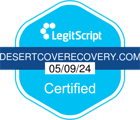12 Step vs Non-12-Step Rehab
For those suffering from addiction, it can seem like there is no hope for recovery. The prevalence of alcohol, prescription, and recreational drug abuse & addiction has continued to rise for years, making the illness affect more people than ever. As one of the leading causes of preventable death in the United States, it’s clear that getting those in need the help they deserve is crucial to the well-being of the nation.
Fortunately, with the help of trustworthy and reliable rehabilitation facilities, there is hope. Rehabilitation programs are available that help sufferers to kick their addiction, recover from the damage it caused, and move on to a healthier drug-free life. However, rehab isn’t a one-size-fits-all kind of treatment – you will have to find the right approach for your situation.
There are a wide array of addiction treatment centers nationwide, each with their own personal philosophy, procedure, and treatments. There are two main treatment methods – 12-step rehab programs or non-12-step rehab programs. While sorting through all the possible rehab centers is not easy, perhaps the best way to begin is to decide which methodology best suits you and your personal circumstances.
Continued after infographic:
How Do the 12-Steps Work?
Easily the most common approach to addiction treatment, the traditional 12-step program focuses on self-help and community-driven treatment through meetings, peer counseling, and other social forms of therapy. Depending on whether the program is being administered in a rehab center or through a public venue meetup, the specifics of the treatment will vary but most programs emphasize 3 things: acceptance, social responsibility, and commitment.
The 12-step program is not necessarily a scientific approach to treating addiction, but rather a spiritual or philosophical approach that focuses on accepting that you have a problem you cannot control alone, being willing to accept help from others, and committing to improving your situation through regular participation. They leverage social responsibility and emphasize the community as a whole as a motivator to help yourself to help those around you.
Many 12-step programs are often religious in nature and those who are religious themselves may more greatly benefit from the approach, but nonreligious users have had success as well.
What Does 12-Step Rehab Offer?
While traditional 12-step rehab follows a specific set of teachings, you’re more likely to find hybrid programs that are influenced by the 12 steps instead of following them exactly. Treatment centers like Desert Cove Recovery often employ an array of treatment options to supplement the 12 steps, including one-on-one therapy sessions with an addiction therapist, mental health treatment to address underlying causes of addiction, and other holistic approaches while helping you to find acceptance, peace, and love with the guidance of the 12 steps.
Desert Cove Recovery 12-step rehab program teaches patients that nobody is perfect, and everyone makes mistakes. Addiction can make the user feel powerless, but self-improvement and salvation are always possible with the courage & motivation to admit your faults and resign yourself to a higher power. Once you’ve achieved acceptance, you can proceed to make amends with those you have wronged and continue your healthy habits to lead a sober lifestyle, encouraging others to do the same by guiding & sponsoring others who are struggling.
What Are the Alternatives to 12-Step Rehab?
Many treatment programs move away from a social therapy focus and implement individualized evidence-based treatments along with group-based options to support them. They focus on the individual while sometimes incorporating the community, emphasizing personal responsibility for your actions and working to improve yourself as a whole. Some of these programs may be religious, while others are not.
One of the primary examples of alternative treatment options is cognitive behavioral therapy (CBT), which focuses on addressing what thoughts or feelings cause the need to abuse drugs or alcohol. Another is pharmacotherapy, which uses medication to curb the withdrawal effects of kicking an addiction to make the recovery process safer and easier. Both of these treatments are conducted by trained medical professionals, making them both safe.
Comparing Rehab Program Options
As stated previously, there are a variety of different treatment approaches available for treating addiction. Most facilities will have their own unique implementation of the 12 steps, incorporating their personal philosophies to offer more comprehensive care.
Treatment Focus
The 12-step program is community-driven treatment that focuses on group therapy, building a community, and helping yourself through helping others. The program itself implements an overarching set of guidelines that can be applied to many cases of addiction in order to begin healing. Rather than addressing the cause of the addiction, users are encouraged to resign to their addiction, make amends for their wrongdoings, and start over by living a clean life. Some programs will include other therapies, as is the case at Desert Cove Recovery, however, some other 12-step based rehabs rely solely on the 12 steps as a basis of treatment. The focus upon community, acceptance and primary interaction with other people in a similar situation can be a great source of comfort and strength for many sufferers who feel that they cannot fight their illness alone.
Non-12-step program treatments usually focus on the individual, emphasizing self-care, addressing flaws, and improving on any shortcomings directly rather than starting over. Many programs may also take a holistic approach to treatment, treating the body, mind, and spirit of the individual based on their specific needs and situation. The focus upon the ‘root’ of a person’s is designed to find a way out of the addictive cycle by addressing the fundamental personal, mental and physical circumstances that lead to an individual’s illness. This can be a longer, less uniform approach to recovery that requires fundamental changes in a person’s life and relationships.
Level of Care
The standard 12-step program does not prioritize formal individualized therapy. Instead in many cases they will assign a sponsor or partner to each member, with their partner acting as their primary support system. These sponsors and partners are often recovering or have recovered themselves, and don’t necessarily have professional experience or qualifications. They do however often have an affinity and understanding of the trials and obstacles that must be faced and overcome in the journey from addiction to recovery. Many people in rehab find a great deal of solace and comfort in this relationship.
Non-12-step programs usually include heavy individualized therapy treatment, often with group therapy as a secondary point. Patients in these programs will likely meet with a therapist or psychiatrist to address their personal situation, address any triggers for the addiction, and build a personalized treatment plan.
Effectiveness
As they are not unique to the individual, 12-step programs have had their effectiveness questioned. Dr. Lance Dodes, a retired assistant clinical professor of psychiatry estimates that 12-step programs only have a 5-10 percent success rate (source[1]). This is because programs like Alcoholics Anonymous – the most famous implementation of the 12-step process – are one-size-fits-all in their approach. Such programs do however have a large volume of participants across the US and have been helping people with addiction since the 1930s. Their positive impact upon individuals and communities is difficult to ignore.
Due to the wide variety in different non-12-step programs, it is hard to calculate the success rate of treatment. However, cognitive behavioral therapy – one of the most popular non-12-step forms of treating addiction, was shown to be 60% effective at keeping patients who abused cocaine clean over a 1-year period, according to a study by RA Rawson of the University of California. (source[2])
Cost & Availability
Traditional 12-step rehab programs like Alcoholics Anonymous are volunteer-run and open to the public, making them entirely free and relatively easily available. Hybrid 12-step rehab programs are often offered at addiction treatment facilities and need to be paid for, making them not free, but usually available depending on your location.
Non-12-step programs are often run by licensed professionals and individualized, primarily requiring an appointment or reservation to be seen or admitted. They can be costly depending on the specifics of the individual program, but many insurance plans cover treatment like cognitive behavioral therapy and others to a certain degree. The availability of these programs depends on the type of program you are seeking and your location, but they are usually available enough that you will likely be able to find treatment near you.
Choosing a Rehab That Offers the Best of Both Worlds
The key to addiction treatment is comprehensive and versatile care. Both 12-step and non-12 step methodologies provide routes to recovery. Recently there has been a growth in programs that combine the communal benefits of 12-step programs with targeted individual treatment methods such as CBT. Studies have shown that combining the 12-steps program with newer target methodologies such as CBT can lead to much higher recovery success rates.
At Desert Cove Recovery, we seek to utilize the benefits of both these processes. Our licensed treatment facility offers specialized treatment with a holistic approach that allows us to treat your body, mind, and spirit by integrating the 12-step program into our proven techniques and treatments. We’ve been helping people to beat their addictions and live happier, healthier lives drug-free. If you’re struggling with addiction but are ready to change your life for the better, we’d love to be your guides on the path to recovery. To learn more, give us a call.
Sources:
[1] http://www.wbur.org/radioboston/2014/03/31/12-step-dodes
[2] https://www.ncbi.nlm.nih.gov/pubmed/12215081




